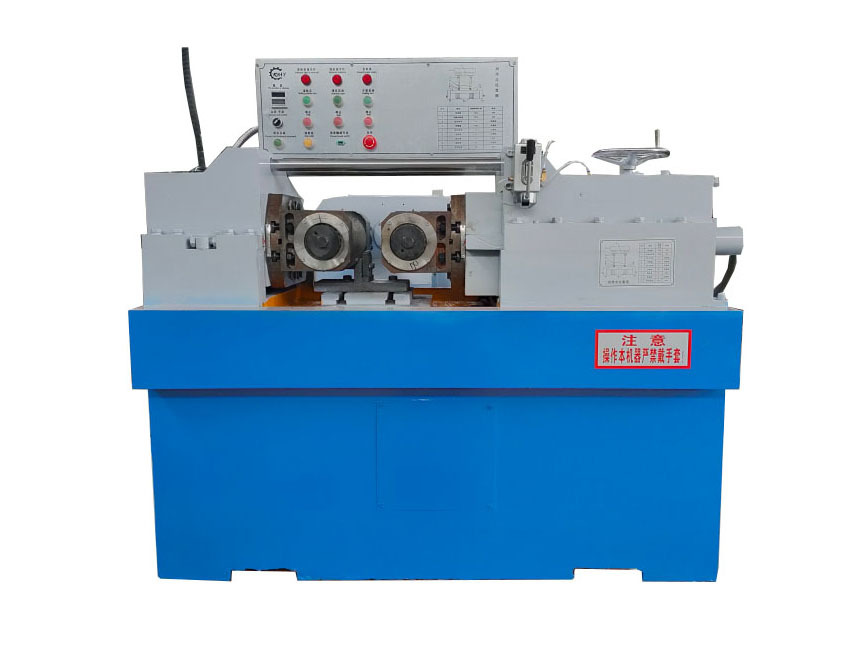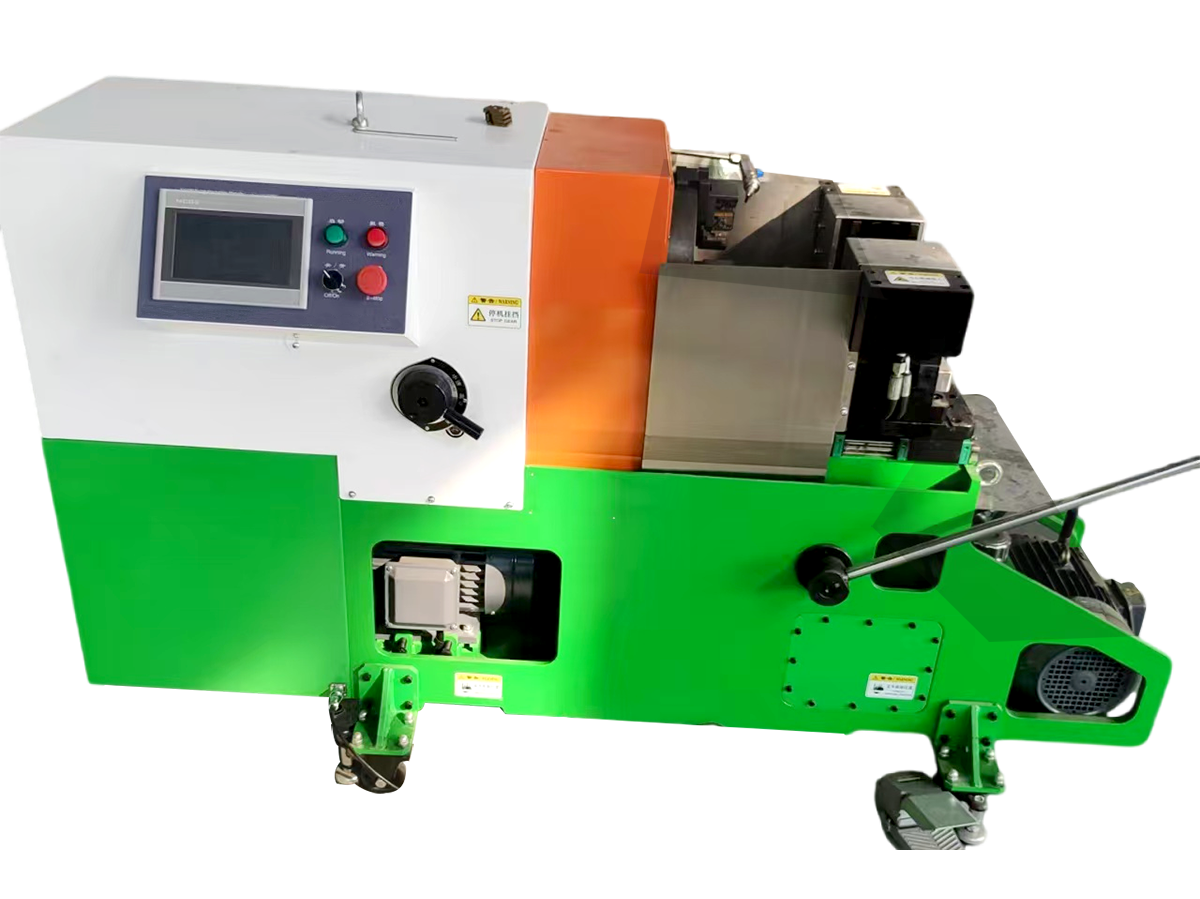Welcome to Hebei Xushi Weiye Machinery Manufacturing Co., Ltd. website!
Rebar Thread Rolling: Understanding the Process and Benefits for Enhanced Construction Quality
Release Time:
Jul 29,2025
Rebar Thread Rolling: Understanding the Process and Benefits Table of Contents 1. Introduction to Rebar Thread Rolling 2. The Rebar Thread Rolling Process Explained 2.1 What is Rebar Thread Rolling? 2.2 Equipment Used in Thread Rolling 2.3 Step-by-Step Thread Rolling Process 3. Advantages of Rebar Thread Rolling 3.1 Enhanced Structural Integrity 3.2 Cost-Effectiveness in Construction 3.3 Improved

Rebar Thread Rolling: Understanding the Process and Benefits
Table of Contents
1. Introduction to Rebar Thread Rolling
2. The Rebar Thread Rolling Process Explained
2.1 What is Rebar Thread Rolling?
2.2 Equipment Used in Thread Rolling
2.3 Step-by-Step Thread Rolling Process
3. Advantages of Rebar Thread Rolling
3.1 Enhanced Structural Integrity
3.2 Cost-Effectiveness in Construction
3.3 Improved Connection Strength
4. Applications of Thread-Rolled Rebar
5. Comparison with Other Bar End Treatments
6. Common Challenges in Rebar Thread Rolling
7. Future Trends in Rebar Thread Rolling Technology
8. Frequently Asked Questions (FAQs)
1. Introduction to Rebar Thread Rolling
Rebar thread rolling has emerged as a revolutionary method in the construction industry, significantly enhancing the way structural connections are made. As construction projects grow in complexity and scale, the need for reliable and robust reinforcement methods has become paramount. Rebar thread rolling addresses these needs by providing a reliable method to create threaded ends on rebar, thus facilitating stronger, more durable connections.
2. The Rebar Thread Rolling Process Explained
2.1 What is Rebar Thread Rolling?
Rebar thread rolling is a manufacturing process that involves creating helical threads on the ends of reinforcing bars (rebars). This technique enables the rebars to be easily connected to other rebars or structural elements using couplers, thus improving the overall structural integrity of concrete constructions.
2.2 Equipment Used in Thread Rolling
The primary equipment used in rebar thread rolling includes specialized rolling machines, which are designed to apply pressure and create threads without removing material. These machines can handle different rebar sizes and are equipped with features that ensure precise thread dimensions.
2.3 Step-by-Step Thread Rolling Process
The thread rolling process consists of several key steps that ensure the production of high-quality threaded rebars:
1. **Preparation of Rebar**: Initially, the rebar is cut to the required length and inspected for any surface defects that may affect the thread rolling process.
2. **Machine Setup**: The rolling machine is set up based on the diameter and type of threads required. Adjustments are made to the rolling dies to achieve the desired thread profile.
3. **Thread Formation**: The rebar is fed into the rolling machine, where it is subjected to pressure from the rotating dies. This pressure causes the material to flow and form threads along the length of the rebar.
4. **Quality Control**: After threading, the rebars undergo quality control checks to ensure that the threads meet specified standards in terms of dimensions and quality.
5. **Finishing Touches**: Finally, the threaded rebars may be treated or coated to enhance their resistance to corrosion and wear.
3. Advantages of Rebar Thread Rolling
3.1 Enhanced Structural Integrity
One of the primary benefits of rebar thread rolling is the significant enhancement in structural integrity. By creating strong, interlocking threads, the connection between rebars becomes more secure, which is crucial in load-bearing structures.
3.2 Cost-Effectiveness in Construction
Rebar thread rolling is a cost-effective solution compared to traditional methods of joining rebars. This technique minimizes the need for additional materials, such as welding rods or spacers, thus reducing overall project costs.
3.3 Improved Connection Strength
The mechanical interlock provided by rolled threads leads to improved connection strength. This is particularly beneficial in seismic zones where structures are subjected to dynamic loads. Enhanced connections help in distributing these loads more effectively throughout the structure.
4. Applications of Thread-Rolled Rebar
Thread-rolled rebar is widely used in various construction applications, including:
- **High-rise Buildings**: Providing robust connections between structural elements.
- **Bridges**: Enhancing the durability and safety of critical infrastructure.
- **Industrial Facilities**: Supporting heavy machinery and equipment.
- **Residential Construction**: Ensuring long-lasting structural integrity in homes and buildings.
5. Comparison with Other Bar End Treatments
When compared to other bar end treatments, such as welding and mechanical couplers, rebar thread rolling stands out due to its efficiency and effectiveness. While welding can weaken the rebar through heat exposure, mechanical couplers may require additional components, making thread rolling a more streamlined option.
6. Common Challenges in Rebar Thread Rolling
Despite its numerous benefits, the thread rolling process does present some challenges. These may include:
- **Material Limitations**: Certain rebar grades may be more difficult to thread roll due to their hardness or brittleness.
- **Precision Requirements**: Maintaining strict tolerances is crucial for ensuring the performance of threaded connections.
- **Machine Maintenance**: Regular servicing of rolling machines is essential to prevent breakdowns and ensure consistent quality.
7. Future Trends in Rebar Thread Rolling Technology
As technology advances, the rebar thread rolling process is expected to evolve further. Innovations may include:
- **Automation**: Increased automation in thread rolling machines to enhance production efficiency.
- **Smart Technologies**: Integration of sensors and IoT devices for real-time monitoring of the rolling process.
- **Enhanced Materials**: Development of stronger and more ductile rebar materials that can withstand the rigors of thread rolling.
8. Frequently Asked Questions (FAQs)
1. What is the difference between thread rolling and welding for rebars?
Thread rolling creates mechanical connections through threaded ends, while welding joins rebars by melting them together. Thread rolling is often preferred for its structural integrity and speed.
2. Is rebar thread rolling cost-effective?
Yes, rebar thread rolling can be more cost-effective than traditional methods as it reduces the need for additional materials and labor.
3. What types of structures benefit from thread-rolled rebar?
High-rise buildings, bridges, industrial facilities, and residential constructions all benefit from the strength and durability provided by thread-rolled rebar.
4. Are there any specific materials that are ideal for thread rolling?
While many grades of rebar can be threaded, softer grades tend to produce better results, as they are easier to form without cracking.
5. How can I ensure the quality of thread-rolled rebars?
Implementing stringent quality control measures during the thread rolling process, including dimensional checks and material inspections, will help ensure high-quality outcomes.
Conclusion
Rebar thread rolling is a pivotal process that enhances the quality and durability of construction projects. By understanding the intricacies of this method and its numerous benefits, construction professionals can make informed choices that lead to stronger, safer structures. As we look to the future, advancements in technology will likely continue to improve the efficiency and effectiveness of rebar thread rolling, solidifying its role as a cornerstone of modern construction practices.
Keywords:
More information
Hebei Xushi Weiye
CONTACT US
Add: Qiaoxi street,Wuqiang county, Hengshui, China
Email: info@xswy-machinery.com
Wechat: Amanda_XUSHIWEIYE
Whatsapp: +8615933856555

Follow Us
Copyright © Hebei Xushi Weiye Machinery Manufacturing Co., Ltd.
Powered by: 300.cn Shijiazhuang SEO | Privacy Policy





